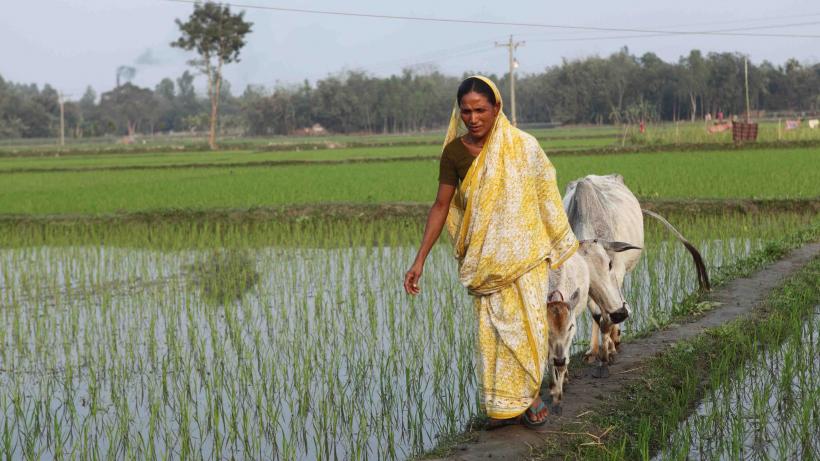
Focus on poverty: Support package works for 'ultra-poor'
A landmark study covered by The Guardian and The Economist highlights a way to sustainably move people out of extreme poverty using a reliable, scalable and cost-effective model.
The findings, which come from research by my colleagues that was aired last week at a lecture in the United Kingdom, describe a programme that’s disarmingly simple. It targeted the poorest of the poor in Bangladesh: women almost totally lacking in savings, assets or education; relying on casual and irregular wage labour; and often socially excluded, with little confidence.
A large Bangladeshi NGO called BRAC provided these ultra-poor women with livestock, two years training on managing the livestock, personal healthcare and saving, plus around US$5 cash each month for food and other basic needs.
The only ‘revolutionary’ aspects of the programme were to package these interventions together and then to study the effects far more rigorously than most evaluations do, with a seven-year randomised controlled trial.
An ultra-poor woman typically has no assets or access to credit, so she cannot make the investments that might lift her out of poverty, such as buying a cow, studying or moving to the city.
Why package different types of support? An ultra-poor woman typically has no assets or access to credit, so she cannot make the investments that might lift her out of poverty, such as buying a cow, studying or moving to the city.
But if she were solely given a cow, it would be the only resource for her to draw on when hit by a healthcare problem, flood or poor harvest — this is why ultra-poor people often deplete, rather than grow, their assets over time.
So the three types of support work together: regular cash support and savings help recipients weather such shocks without drawing on their assets, while health education should reduce the number of shocks faced in the first place.
And it seems to work. Unlike the poor women who didn’t take part in the programme, the beneficiaries increased their assets during the two years of support — and were still expanding them five years after the support finished.
After seven years, the average recipient had increased their savings nine-fold, had bought more livestock and even land, and earned 37 per cent more on average working in more regular jobs. The returns were worth US$5.40 for every US$1 put into the programme. And even non-recipient neighbours tended to benefit.
After four years, when the promise in Bangladesh become clear, other countries initiated replicas: Ethiopia, Ghana, Honduras, India, Pakistan and Peru. Results from those look similarly promising — and this is crucial. The programme’s success across such varied social, cultural and economic contexts suggests two things: firstly, that the ultra-poor face similar core challenges everywhere; secondly, that substantial numbers around the world may be able to escape the cycle of ultra-poverty through a similar solution.
The studies also show that development practitioners really can make huge progress by using good research to identify and communicate best practice.
This programme certainly cannot solve everything: it does not address challenges such as a lack of public infrastructure and good governance. And as The Guardian highlighted, future studies must explore the impacts for even harder-to-reach recipients such as elderly and disabled people.
But it is still remarkable in showing that we can sustainably break the trap that keeps many people in ultra-poverty — and showing how we can do it. Around 30 countries are trialling, or considering, replicas. This is great news for the nearly 900 million people living in extreme poverty.
This post originally appeared on Sci Dev Net

